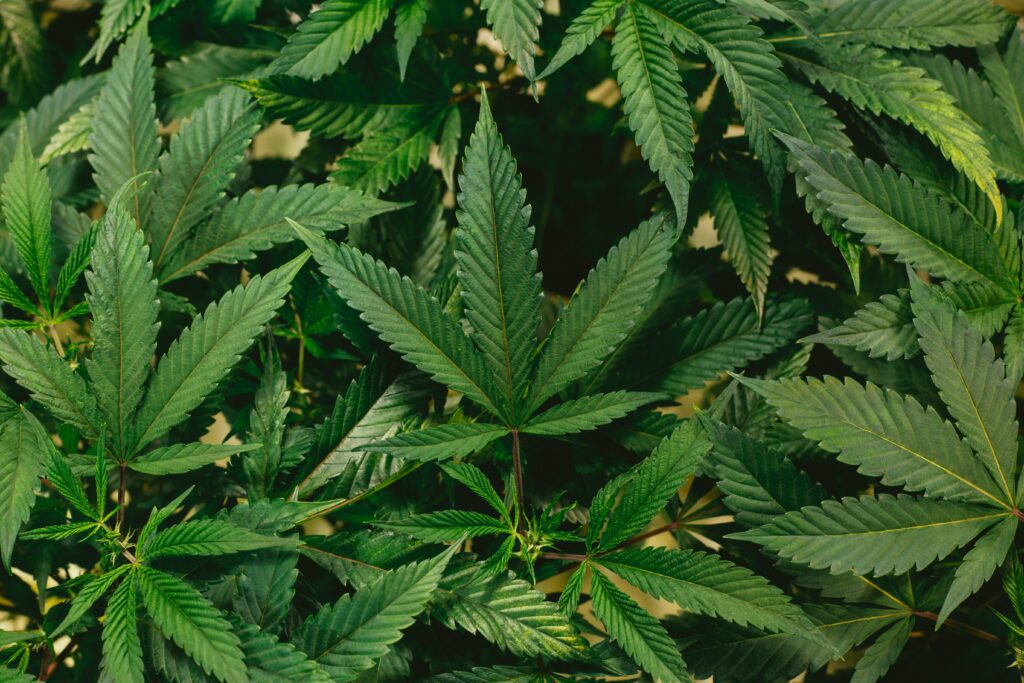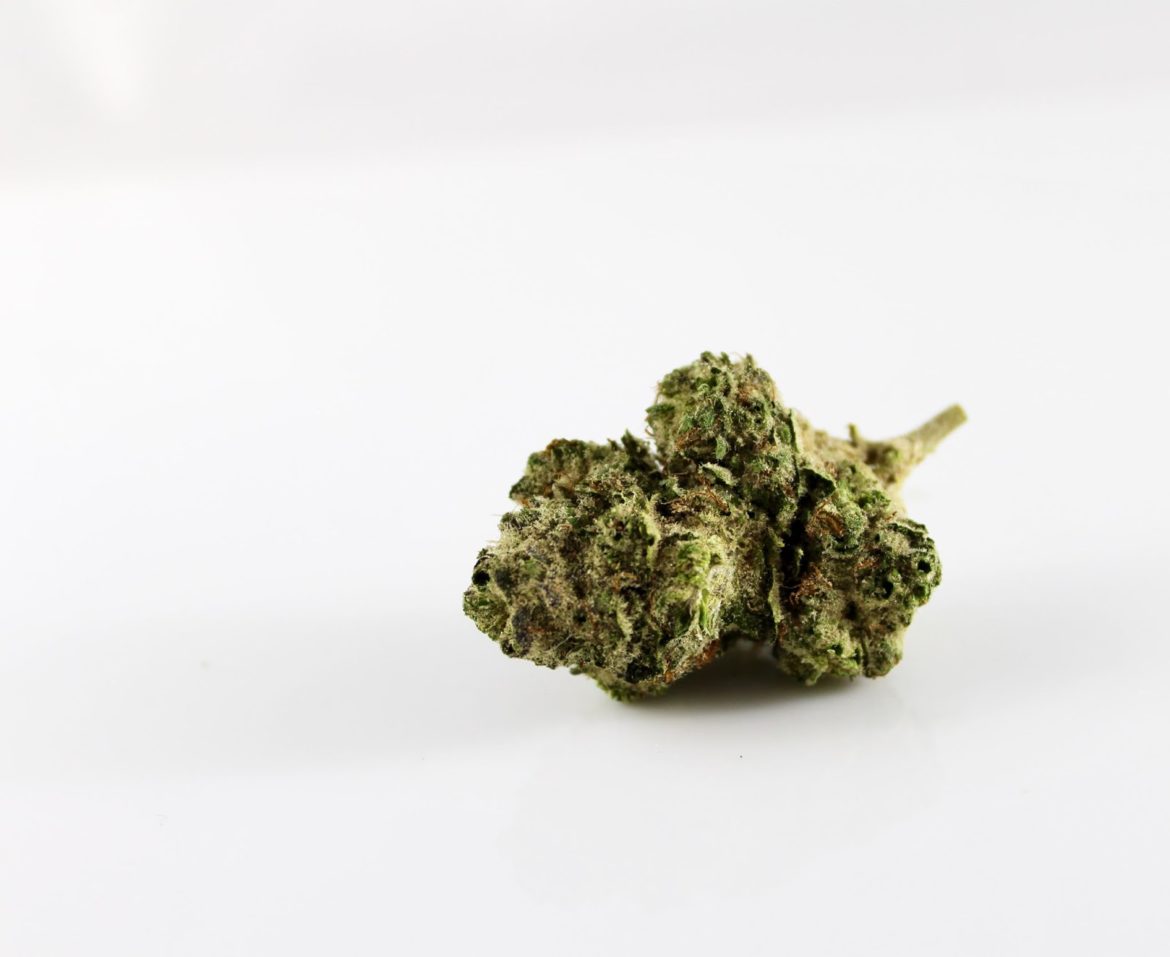Weed and apples only have a few things in common. They’re both plants, and you can technically eat both of them. You can pluck an apple right from a tree and use it right away. It will be fresh, crisp, delicious, and satisfying. If you pluck a bud right from a cannabis plant and try to smoke it, it’s going to leave you feeling underwhelmed at best.
Weed needs to be cured before you can smoke it. It might seem like fresh weed is better, but weed isn’t even technically done becoming weed until after it’s been dried and cured. If you want a tasty bud that gives you a great high, it’s worth the extra steps.
Why does weed need to be cured?
If you don’t cure your weed, it won’t get you high, it won’t taste good, and it will go bad quickly. Those are three of the worst possible scenarios with weed, and curing is the process that prevents them from happening.
To increase THC levels
Weed is full of a cannabinoid called THCA while it’s growing. THCA isn’t psychoactive. It won’t get you high. THC is what gets you high, and THC comes from THCA.
In order to convert THCA into THC, you need to cure your weed. Harvesting your buds and allowing them to sit at room temperature in medium humidity levels will slowly start converting THCA into the THC you want, increasing the potency of your weed.
If you try to cure your weed really quickly, this process won’t happen. You need to allow the THCA to naturally degrade a little bit before you cure the weed. The curing process preserves the newly converted THC. If you cure it before it converts, you’re stuck with the amount of THC you have and you can’t increase it. Patience is a virtue.
To preserve terpenes
Terpenes are the aromatic compounds that give your weed its flavor and scent. They add an element of aromatherapy to every joint you smoke. If you don’t cure the weed or attempt to cure it too quickly, the terpenes will break down.
When you take a hit of weed with broken-down terpenes, you’ll notice that the taste is harsh. The weed almost tastes spoiled because all of its flavors have degraded. Proper curing encourages them to remain intact.
To keep your weed from going bad
Curing your weed after the THCA converts to THC preserves its potency. If you wait too long to cure your weed, another conversion begins to happen. Your THC will degrade into CBN, another non-psychoactive cannabinoid. Preserving your weed properly when THC levels are close to their fullest potential will keep your weed potent for as long as two years, just as long as you’re storing it correctly.
Do I need to cure the weed I just bought?
No. The weed you just purchased from a reliable retailer or dispensary was cured before they even received it. Curing is something the grower does. You only need to be concerned with the curing process if you’re growing your own plants. If you aren’t, smoke your weed exactly the way it comes. Attempting to cure it won’t do anything to impact its potency or longevity if it’s already been cured.

Getting your weed ready for curing
The first part of curing is harvesting your weed. Cut your branches and remove the leaves, leaving the buds attached.
You can dry weed the same way you’d dry garden herbs you cook with. Tie the branches up and hang them from the ceiling in a dark room. The room should be kept at about 70 degrees, and the humidity should be kept at about 50%. This may require the use of an air conditioner and a dehumidifier.
Monitor these conditions several times a day to make sure they stay within the required ranges. Every day, check your flowers. When the branches harden enough to snap and the flowers feel a little crunchy on the outside, your cannabis is ready to cure. Just be patient and wait to be sure. It isn’t unusual for cannabis to take up to two full weeks to dry. If you aren’t sure, try to snap the branch. If it breaks like a twig, your cannabis is ready.
When everything is dry, separate the buds from the branches and get rid of any unwanted debris. Place the dried buds in an airtight container. You don’t need anything fancy for this. Mason jars work perfectly.
You want your jar to be about ¾ full of cannabis flowers, leaving a little headroom. Twist the lid on tight. Shake the jar up and down a few times. If the buds rattle around, they’re dry enough. If they’re sticky or they clump together, there’s still too much moisture. Put them back in your drying room on a rack to let them finish.
If you have any doubts at all, let them dry for another day or two. If the cannabis flower is still too wet when you put it in the jar, it won’t cure. It will breed bacteria and it will rot, completely ruining your crop. You worked hard to grow those beautiful buds and you deserve to enjoy them. Don’t take any chances.
Once you’re sure the cannabis in the jar is dry enough to cure, stick the jars someplace cool, dark, and dry.
The curing process
The curing process begins as soon as you put your cannabis in jars and store it in a cool, dark environment. For the most part, it’s going to cure itself. You just need to check in the jars and give them a little air every now and then.
On the first day, take a peek inside the container. The buds should be a little less “crispy” than they were when you put them in. The airtight mason jar encourages the remaining water and oils in the bud to re-nourish the bud, restoring some of the moisture content. If the moisture isn’t coming back, your cannabis was too dry when you put it in.
Put your jars on a schedule. Open them up twice a day for about five minutes at a time. When you do that, you’re allowing moisture out of the container and air into the container. That’s why leaving headroom is so important. The buds need to breathe, naturally cycling through air and moisture until they’ve fully cured.
A good sign that your moisture balance is correct is the humidity inside the jar. Ideally, it will be somewhere around 60%. Measuring the humidity inside of your jars may prove difficult to do. You can get a tiny little device called a hygrometer from the hardware store or the pet store. Contractors use them when painting or working with mortar. Pet stores stock them for reptile cages.
Place the hygrometer inside of the jar. If you position it against the side, you’ll be able to check the humidity levels without opening the lid. If the humidity is higher than you’d like, leave the jar open for a few hours to let moisture escape before it becomes a problem. Check the levels again a few hours after you’ve closed the lid. Repeat if necessary.
If the jar starts to smell bad or rotten, especially if it smells like a cat’s litter box, stop curing the cannabis. This is a sign that there was too much water left in the bud, and bacteria began to form. When the bacteria break the cannabis down, it starts to smell like ammonia. This isn’t something you can fix. Bad weed can make you sick, and you need to toss it out.
After three weeks, you can start opening your jars twice a week. They won’t need as much air and they won’t have as much moisture to expel.
This process can take between six and eight weeks, but it’s fairly easy. If you’re patient, you can cure your weed for up to six months to improve its flavor and potency. Six months is a long time, but it doesn’t require a lot of hard work. All you need to do is open and close a jar a few times a week to allow your cannabis to cure on its own.
The takeaway
Curing weed isn’t hard. You don’t need to be an expert gardener or a botanist to cure your own crop. It’s simple work, but the process takes a lot of time and patience. As long as you’re keeping an eye on it and remain mindful of your humidity levels, it isn’t a backbreaking process.
If you need something to smoke while you’re waiting for your buds to cure, Emjay has plenty. Best of all, you’ll only have to wait half an hour. You might have to be patient for your own bud, but you don’t have to be patient for ours. We deliver weed straight to your door. Take the lids off your jar, place your order, and your weed will arrive by the time it’s time to close your curing jars.
